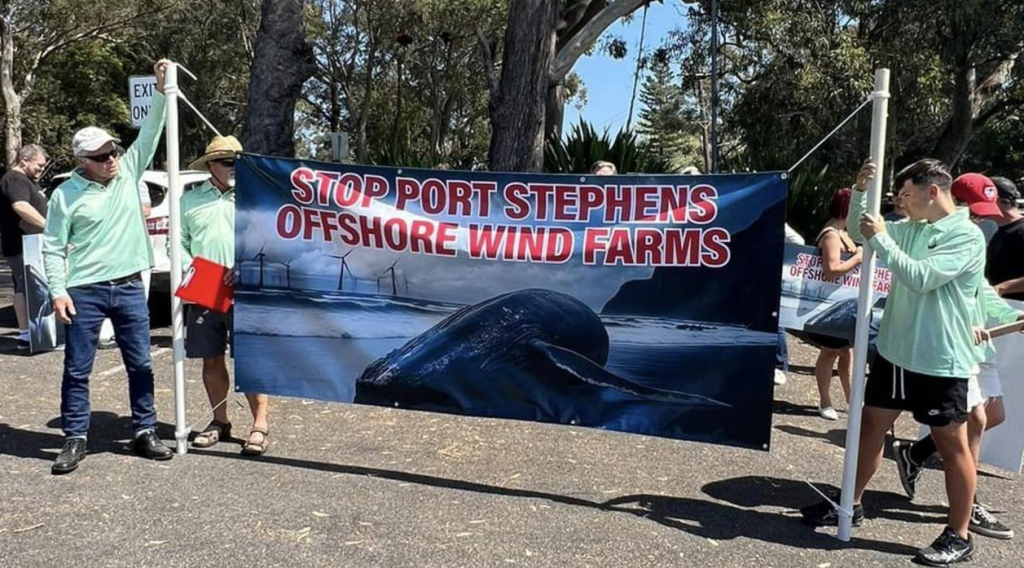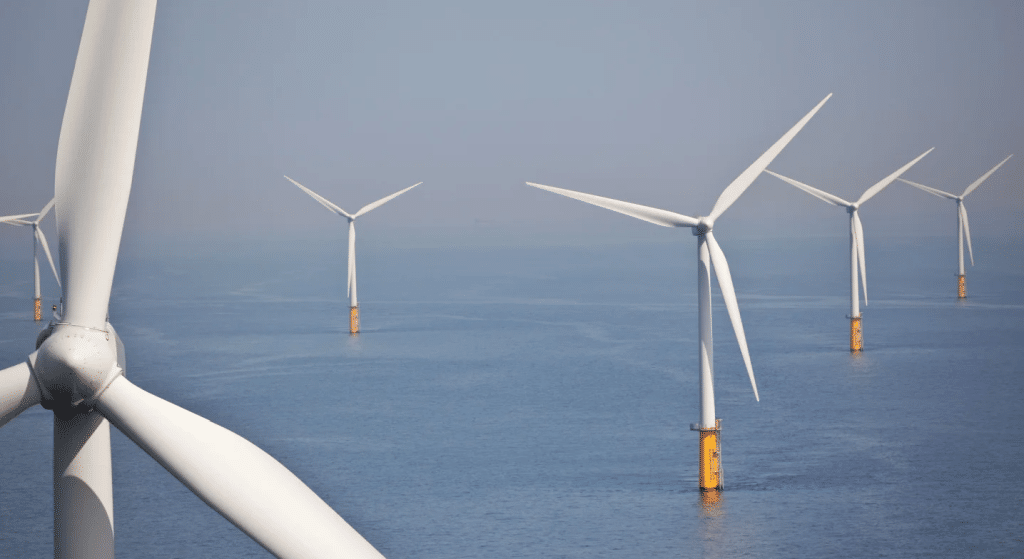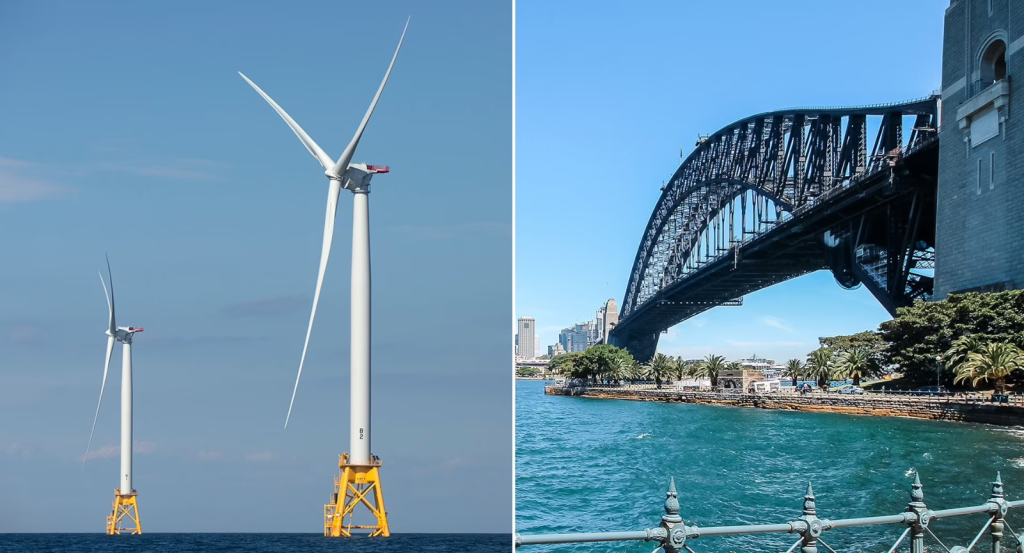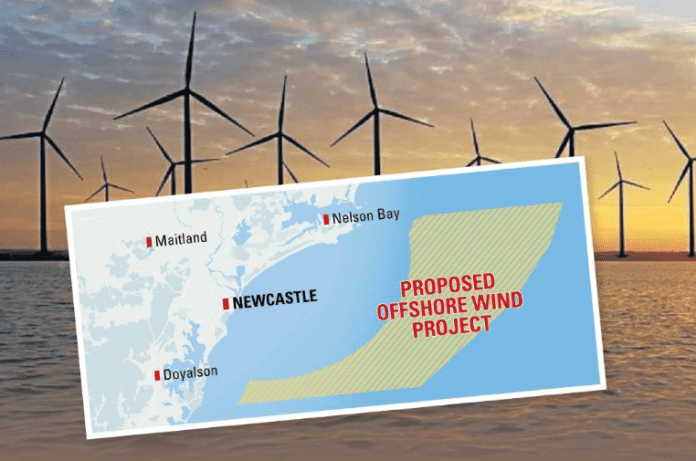The Australian federal government has put forth a proposal to construct an offshore wind farm off the coast of New South Wales (NSW). The project aims to cover an area equivalent to Greater London and is anticipated to provide job opportunities and diversify energy resources in the region. Energy Minister Chris Bowen has expressed that the wind farm, which will feature turbines as tall as the Sydney Harbour Bridge and will be situated near the Hunter Coast, promises significant job creation and renewable energy production. Despite these benefits, the Port Stephens community has voiced concerns over the 1,800-square-kilometre wind farm, set to be located about 20 kilometers off the coast. The primary apprehension stems from the potential impact on the local fishing community, especially since the wind farm is planned to be established over a popular fishing spot known as “the car park.”
The Anthony Albanese government’s intention behind the offshore wind farm is to progress Australia towards net-zero emissions. The Hunter Offshore Renewable Energy Area, spanning between Swansea and Port Stephens, is projected to generate up to 5GW of wind energy, potentially powering an estimated 4.2 million homes. The federal government has designated this area for future offshore wind development. Again, concerns about its long-term effects on tourism, the environment, and the coastline persist.
Wind Farm Environmental Impact
Constructing and operating a large-scale wind farm in a biodiverse marine region can have several environmental implications. These might include:

Disturbance to Marine Life
The installation of turbines can disrupt marine habitats and migration patterns of certain species.
Noise Pollution
The operation of turbines generates underwater noise, which can affect marine species, especially cetaceans like dolphins and whales.
Alteration of Seabed
The anchoring of turbines can alter the seabed, affecting benthic organisms and local ecosystems.
Bird Migration
Turbines can pose a threat to migrating birds if their paths intersect with the wind farm.
Wind Farm Affecting Economic Balance
The introduction of the wind farm will have a dual impact on the local economy:

Impact on Fishing
The wind farm’s location, especially if it overlaps with popular fishing spots, can restrict fishing activities, leading to potential economic losses for local fishermen.
Job Creation in Renewable Energy
On the positive side, the construction, maintenance, and operation of the wind farm can create numerous job opportunities in the renewable energy sector, potentially offsetting losses in other areas.
Stakeholder Engagement
To ensure all stakeholders are adequately consulted and their concerns addressed, the government can employ several strategies:
Public Consultation Forums
Organize regular town hall meetings and public forums where residents can voice their concerns and get answers directly from project developers and government representatives.
Feedback Mechanisms
Establish dedicated channels (like helplines or online portals) where stakeholders can submit feedback, concerns, or suggestions related to the project.
Collaborative Decision-Making
Involve representatives from local communities, industries, and environmental groups in the decision-making process to ensure a balanced approach.
Transparent Communication
Regularly update the public on project developments, environmental assessments, and other relevant information to maintain transparency and trust.
Nick Anderson, a spokesperson for the Love Noah Head group, voiced concerns about the potential damage to beaches, coastlines, wildlife, and the tourism industry. He emphasized the importance of these areas for relaxation and recreation, and how they contribute to the Australian identity. Despite successful lobbying by Noah Head locals to reduce the proposed zone and move it further from the coast, concerns remain. The wind turbines, which will stand at a staggering 260 meters—almost double the height of the Sydney Harbour Bridge—will be clearly visible from various points along the coast, potentially altering the natural beauty of the landscape.

Bowen believes that the government is striking the right balance between addressing community concerns and meeting project requirements.
The government has outlined a three-stage plan for the wind farm’s construction, with an expected completion by 2030. The stages involve community consultation, expressions of interest from wind farm companies, and obtaining environmental approvals.
The offshore wind farm proposal near Port Stephens has sparked discussions on various fronts, including environmental, economic, and community aspects. As Australia explores avenues for a sustainable energy future, such projects highlight the intricate task of integrating new technological solutions with existing local ecosystems and industries. The Port Stephens proposal illustrates the multifaceted nature of decision-making in contemporary times. Renewable energy, as an objective, necessitates thorough consideration and consultation with all involved parties. As deliberations on the wind farm progress, the outcome will reflect the collective input and concerns of the broader community.
Find out more news about Port Stephens. Click here to discover trends from the world of fishing.
You may also like:
- Advancing Angling Horizons: The Emergence of Travel Fishing Rods
- Why Pink is the New Must-Have for Bluewater Fishing Lures?
- Shimano Stella vs. Daiwa Saltiga vs. Penn Authority: Battle Of The Titans
- MERCURY MARINE: THE AVATOR 20E and 35E Outboards Unveiled
- Angling Advancements: AFTA 2023 Highlights Cutting-Edge Fishing Gear




